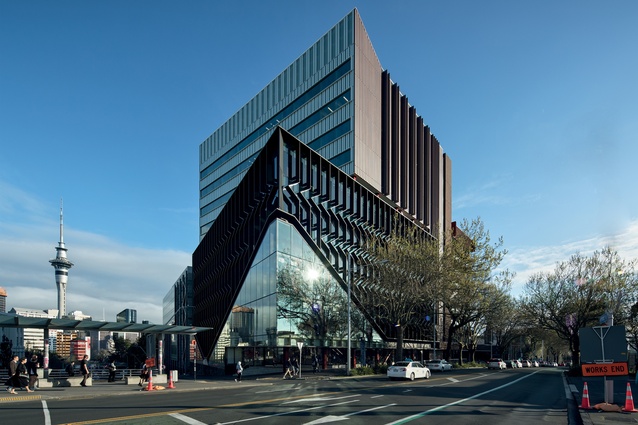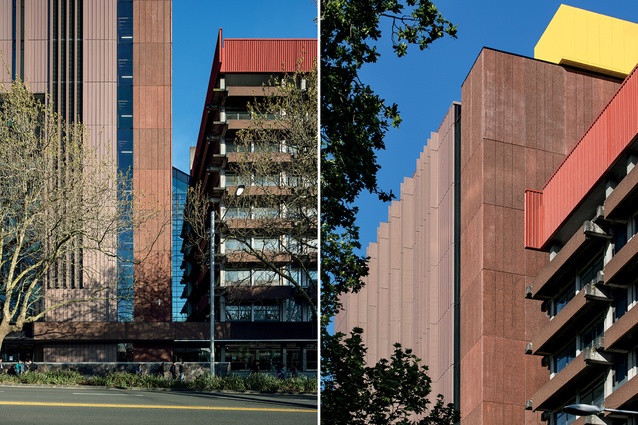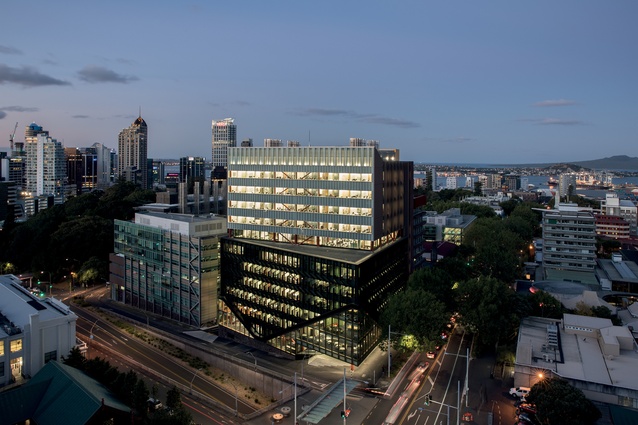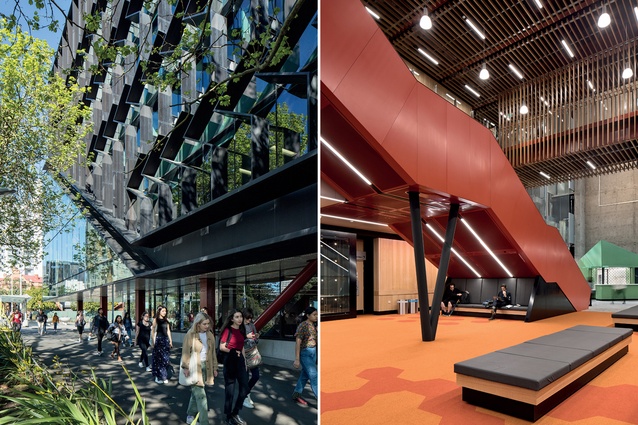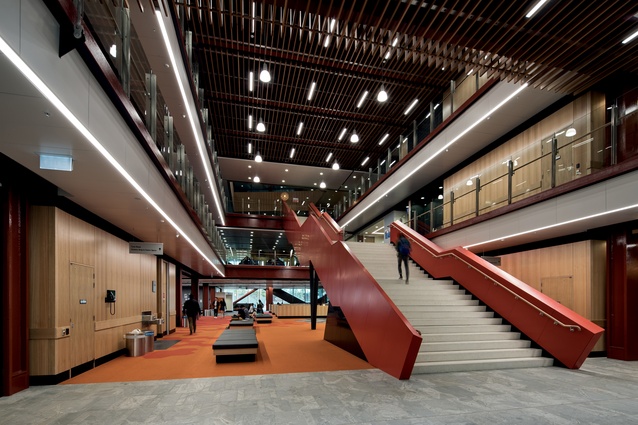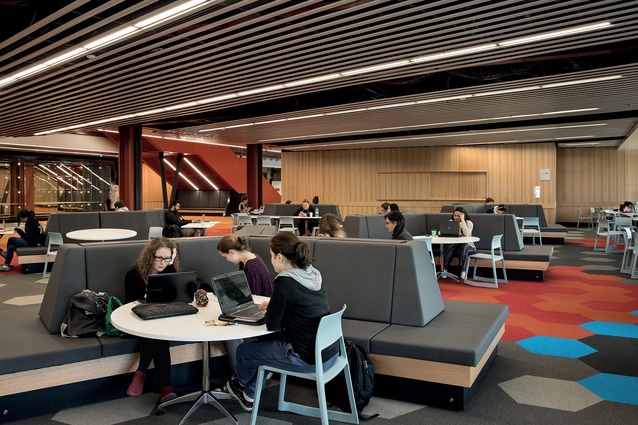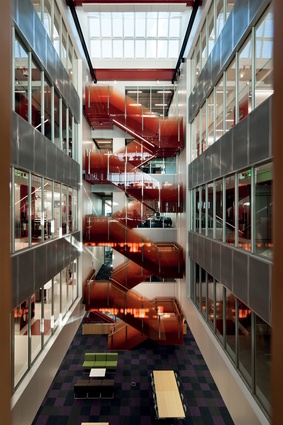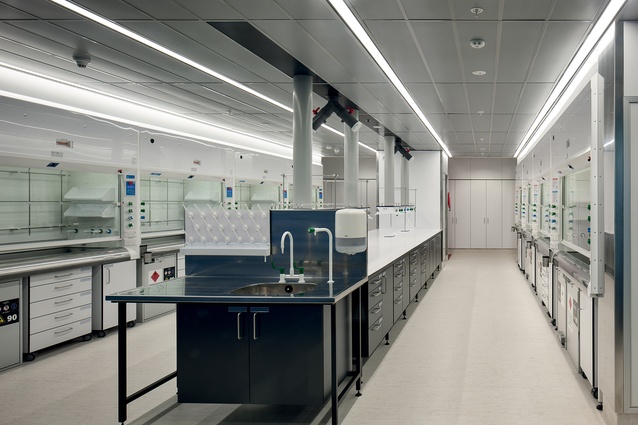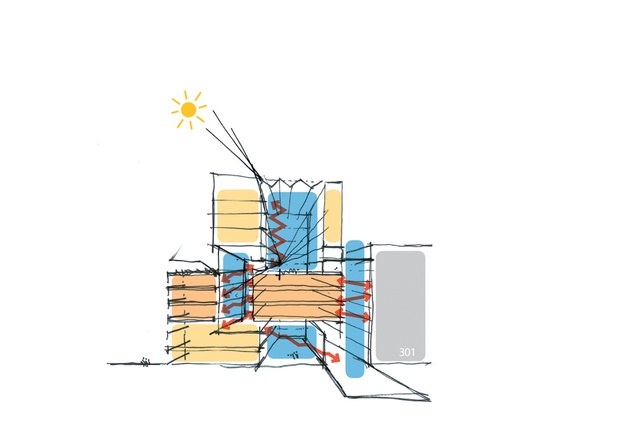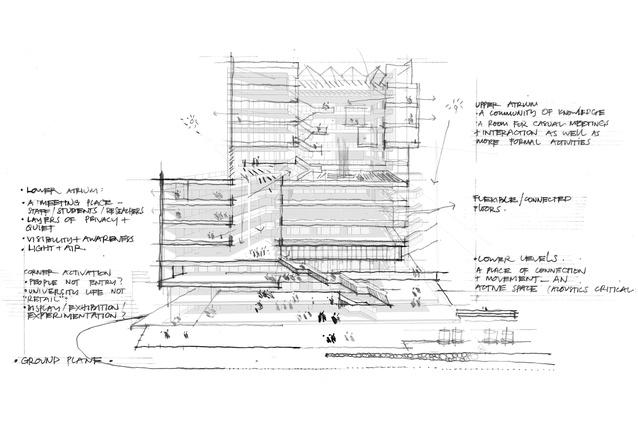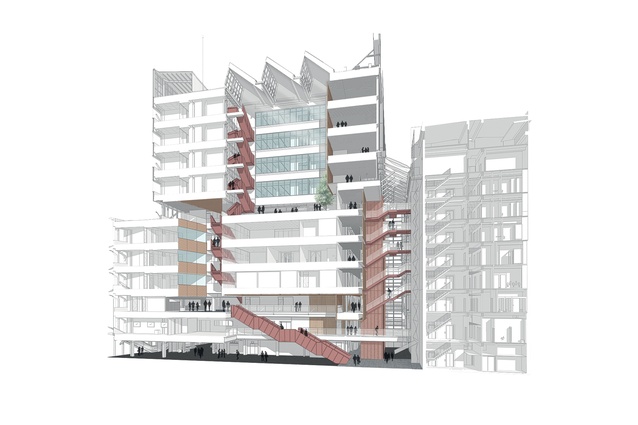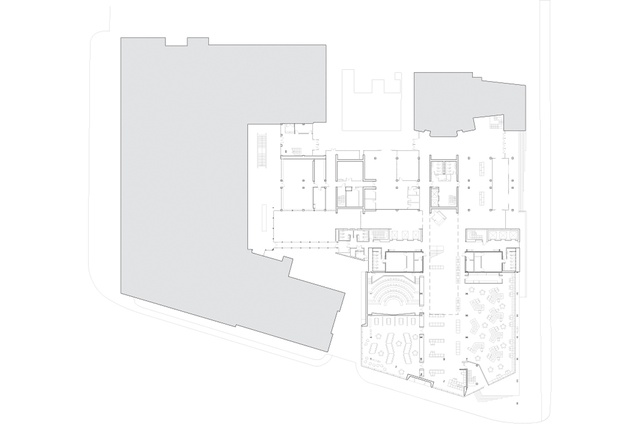Social pathways: UoA Science Centre
Densely packed into the University of Auckland’s Grafton site is Architectus’ new Science Centre: a large and complex building with an adventurous and social programme of movement.
It has been said, reportedly by no less likely a person than the late Zaha Hadid, that there’s no great architecture without a social programme. As Aotearoa/New Zealand experiences a government that prefers the alleviation of child poverty and other social objectives to tax cuts, this is a premise that aligns to wider issues in our society.
Still, apart from the fact that not much architecture warrants the term ‘great’, there are few enough examples of buildings outside the domestic where one can see evidence of a concern for a social programme – or, at least, not a positive one. One measure of a building’s fit to its community – or an architect’s – may, therefore, be whether or not the experience of the work reveals any kind of social purpose.

Architectus’ Science Centre (Building 302) at The University of Auckland is a large and complex building, densely packed into its site and surrounded by and, at times, attached to adjacent buildings, not least the remains of the heroic Ministry of Works’ Physics and Chemistry blocks of the ’60s, whose craggy silhouettes were a distinctive part of the Auckland skyline for decades. The exterior of the new building acknowledges its neighbours and honours some of their materials, particularly the richly coloured scoria walls, which acted as heavily rusticated bases to the earlier blocks.
The entry on the corner of Symonds and Wellesley Streets is one of a number of points of access through the permeable perimeter of this building. It is modestly articulated but clearly visible and well sheltered, and it provides good visual linkages between the interior and the streetscape outside, including to St Paul’s Church on the opposite corner.
Shading devices, representative of chemistry diagrams (if I understood correctly), slash vigorously across the lower west façade which is cranked to follow the line of Wellesley Street, while upper floors align with other university buildings in the block. Along Symonds Street, the necessary attention is paid to acknowledging relationships – like the maintenance of verandah heights – with neighbours. The north and east faces are largely obscured by other buildings.

But the exterior of the building reveals little about what kind of a life can be carried on within it. It is movement through the inside spaces that delivers the social programme and which reveals the opportunities and experiences that the building provides its inhabitants. Circulation is punctuated and ordered by a number of atria. Not all of these run the full height of the building but, rather, some are excavated out of the (considerable) mass of the structure. These gathering spaces are of different volumes and footprints and, in some cases, they link with or are visible from one another.
They are overlooked by room and circulation spaces in the way that crowded buildings overlook and share life with tight city squares. A number of ramps connect the new work to other buildings in the complex and these are pitched to adjust to changes in floor levels. Together, these different voids and pathways combine to provide a surprising range of frequently unexpected spatial experiences that make travel through this building something of an adventure.
The circulatory excitement diminishes with height since the lower floors, with the largest populations, include significant areas of loosely arranged public space. Upper floors are more controlled and orderly but compensation is found in spectacular views of the city and harbour.
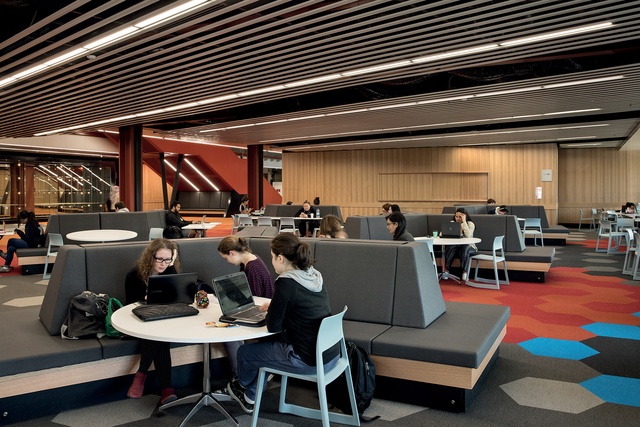
Some of the devices used in the Science Centre have been employed by Architectus before in university buildings. Versions of the small occasional lounges which featured in the Maths, Statistics and Computer Sciences Building at the University of Canterbury are found in here and, as in the earlier project, these provide casual spaces for cross-fertilising encounters between staff and students from different disciplines. It is in the overall programme of movement through the building, however, that a social agenda is most evident.
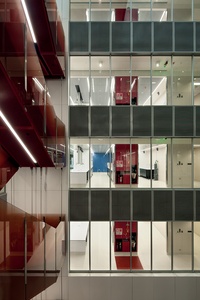
Perhaps surprisingly for a practice whose buildings are sometimes described as ‘rational’, the ways in which movement is experienced in the Science Centre feels casual. The architect has provided a selection of optional pathways rather than, for instance, the very much more controlled and controlling promenade architecturale experienced in Rem Koolhaas’ Dutch Embassy in Berlin.
Like the embassy (and many other buildings), internal walls in the Science Centre are frequently glazed, the transparency encouraging an awareness of what happens within rooms and a connectedness between them and circulation spaces. This is most obvious in the multilayered access to the various atria where the sense of relaxed gathering and sharing is animated by the students who, even before the start of the academic year, were using the building in surprising numbers.
The spatial experience of this complex building is enhanced by the materials employed. Timber, stainless-steel mesh, a vigorously expressed steel frame complete with the by-now-obligatory K braces and a palette of strong, warm colours all combine to reinforce the impression that, walking around this building, one is never quite sure what will be encountered next.
Anybody who remembers the buildings that this complex replaces will be pleased to see pink aggregate-faced panels replicated on some interior walls. Still more impressive is the heroic concrete shear wall exposed in the main entry foyer; it has a potent tectonic presence in the building and frames a stack of massive tapa cloth panels.

This is a heady mix and a welcome change from many sober and less-imaginative projects where the architect’s control is expressed in a repressive uniformity. Here, by contrast, the control that is unquestionably evident is employed to provide a feast of flexible, experiential opportunities, which offer visitors new and often unexpected ways of seeing the building. This is a social programme that privileges the visitor’s (and the user’s) unique, first-person encounter with this rich and complex piece of architecture.
As is always the case, though, the building cannot be understood by reading about it. I’m not sure what The University of Auckland’s policy is but anybody interested in new architecture in Auckland should treat the Science Centre as a public building. Go and explore it for yourself.

